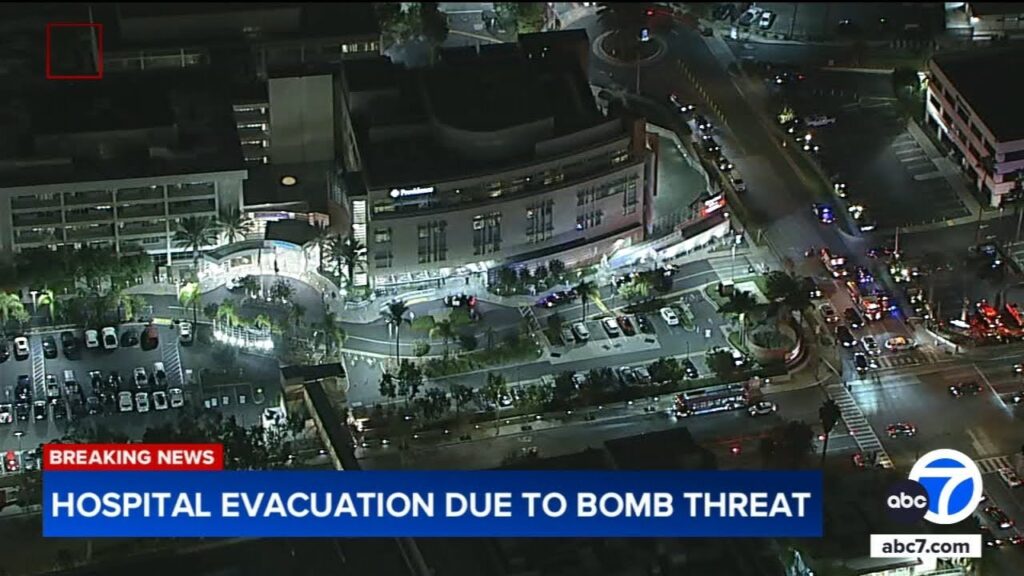On Thursday afternoon in Fullerton, California, the Fullerton Police Department (FPD) launched a major emergency response after receiving a series of bomb threats targeting four schools and one hospital. According to news reports, no explosive devices were found — but the scale of the incident and the swift coordinated response make this a significant event for the local community. ABC7 Los Angeles+2CBS News+2
The first threat came in at about 1:25 p.m. at Troy High School, where a caller claimed explosives had been planted on campus. CBS News+1 Within minutes, additional threats followed: at Fullerton Union High School at 1:49 p.m., then at Sunny Hills High School at 1:53 p.m., and then later at Fern Drive Elementary School at 2:20 p.m. CBS News+1
Later that afternoon, shortly after 5 p.m., a threat was made to the emergency room of St. Jude Medical Center. The hospital partially evacuated the ER as a precaution while police searched the facility. Patients were later allowed back inside when no device was found. ABC7 Los Angeles+1
Why this matters:
While no explosives were discovered, the threats still triggered full lockdowns and evacuations across multiple campuses and a healthcare facility. That alone underscores how seriously such incidents are treated — and how disruptive they can be. Schools had to activate emergency protocols, law‑enforcement and canine explosive‑detection teams were deployed, and communities were unsettled. CBS News+1
Response from law enforcement:
The Fullerton PD stated they worked closely with school administrators and external agencies, including explosive‑detection canine units, to search the affected sites. ABC7 Los Angeles+1 Detectives said they are investigating to determine who made the calls and whether a single person or multiple actors were involved; at this point the threats’ connection is unclear. Yahoo+1
Impact on schools and hospital:
- All four schools were placed on lockdown. Students and staff were held in safe zones or evacuated as per protocol. CBS News+1
- At St. Jude’s hospital, the emergency department partly evacuated and operations were temporarily disrupted while the threat was assessed. ABC7 Los Angeles
- For the local community and parents, even the possibility of a bomb threat causes anxiety: Are the students safe? Will class resume? Will hospital services be delayed? These are real practical concerns when emergency responses like this happen.
- Even though no bombs were found, the cost in terms of lost instructional time, resource deployment, and psychological effect is real.

Broader context:
Bomb threats — whether credible or hoaxes — are not new in U.S. schools and hospitals, but this incident stands out because of multiplicity: four schools plus a hospital in one city, within a short time frame. The speed and number of calls raise questions about coordination and motive. News coverage notes that it remains undetermined if the threats are linked or from a single source. CBS News+1
From a safety and security perspective, it’s a reminder of how prepared institutions must be. Schools must have lockdown procedures, evacuation plans, communication systems. Hospitals must have protocols to move patients, manage incoming emergencies, and coordinate with law enforcement. The Fullerton PD’s rapid deployment of canine units and external support shows best practices in action.
What to watch in the video:
- How law‑enforcement arrives on scene, secures perimeters, coordinates with school staff.
- Visuals of lockdowns: students in hallways, closures of entrances, perhaps helicopters or K‑9 units.
- The hospital scenario: how the ER is managed, how patients and staff are moved.
- Interviews or statements from officials (if any) explaining timeline, response, and reassurance.
- The tone: likely calm but cautious. Official communication emphasising “we found no devices” but still investigating — reassuring the public while maintaining vigilance.
Key takeaways / lessons:
- Preparedness matters. The institutions responded quickly; procedures seem in place. The fact no device was found doesn’t mean the response was unnecessary.
- Communication is critical. Students, parents, hospital patients and staff all need timely updates. Misinformation or delay can cause panic.
- Coordination between agencies. Schools, law‑enforcement, canine units, hospital security all needed to work together.
- Psychological impact. Even a hoax threat can leave lasting anxiety among students, staff, parents and patients. Follow‑up communications (counselling, debriefs) are important.
- Investigation and deterrence. Finding the caller(s) is vital not just for justice but to deter future threats. The fact that multiple sites were targeted may indicate a pattern or deliberate attempt to cause disruption.
What remains unclear / questions:
- Who made the threats, and what was their motive? Was it prank, malicious, coordinated?
- Are the threats indeed connected, or coincidental?
- Will there be changes to protocols or funding for increased security in the upcoming school year?
- What support will be provided to students and staff to recover from the trauma of the event?
Conclusion:
This incident in Fullerton reminds us that schools and hospitals—even those in seemingly low‑risk suburban settings—are vulnerable to threats that demand serious responses. The fact that no device was found is good news, but the disruption and cost were significant. For viewers of the video, you’ll see not just the raw footage of response, but also a case study in how multiple emergency scenes are managed in parallel. It’s a window into modern crisis response in public‑safety, education and healthcare environments.


